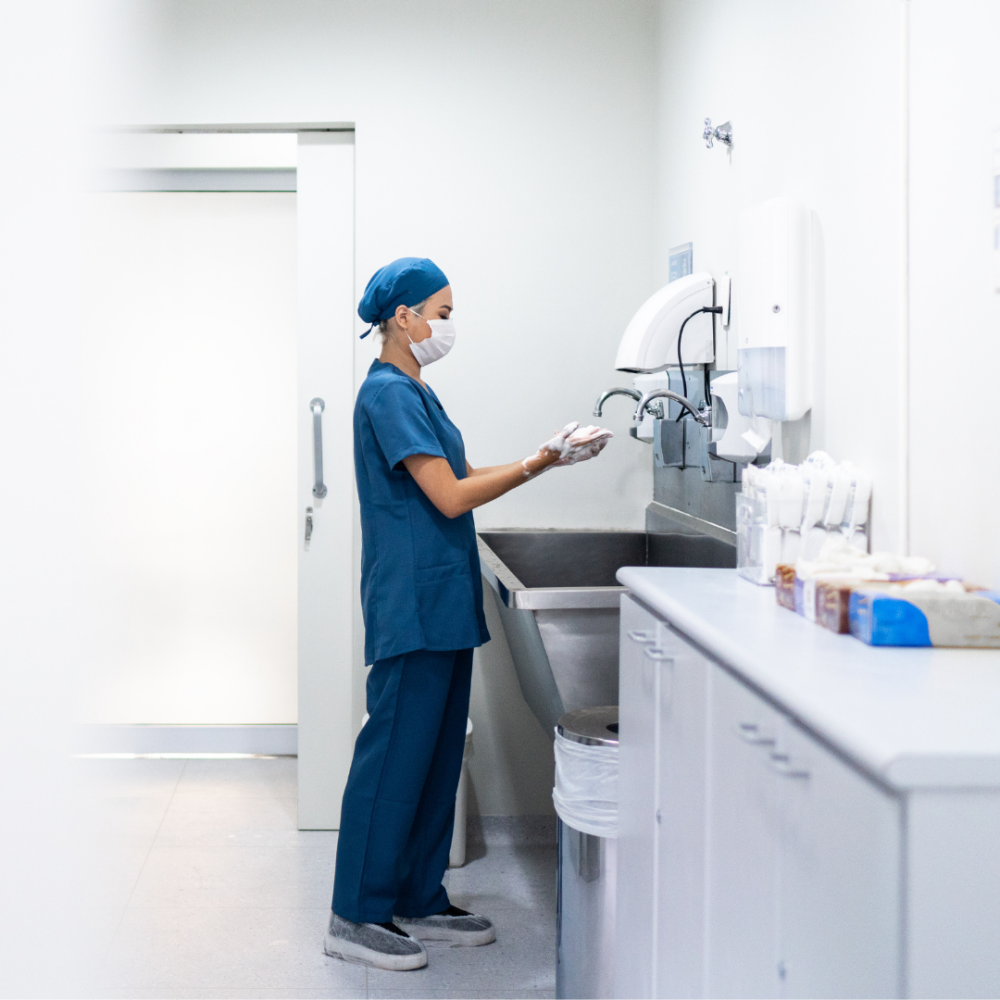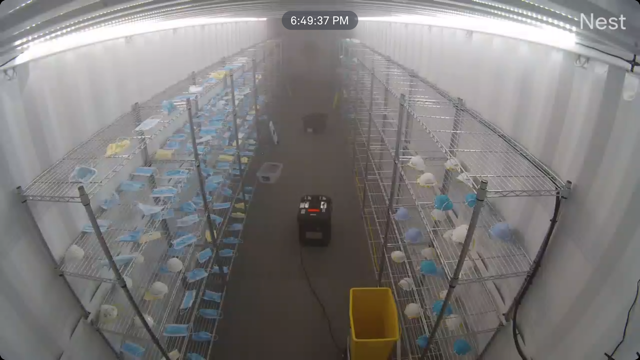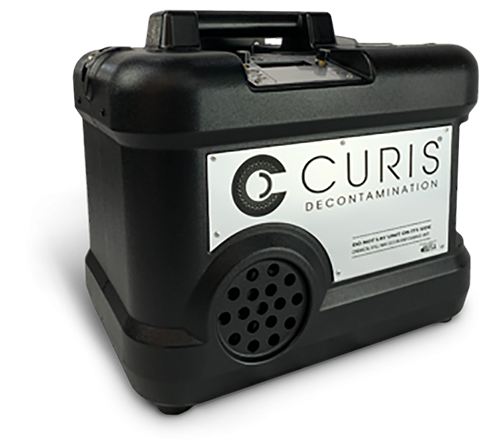Rapid Increase in Hospital Acquired Infections (HAI) During the COVID-19 Pandemic
A New Challenge Emerges
While the fight to prevent the spread of COVID-19 continues, a dangerous public health crisis is emerging for a different reason. The COVID-19 Pandemic has been the primary concern of healthcare workers and environmental staff since the novel virus was first reported in late 2019.
The need to shift the focus primarily to COVID-19, including the need for fast turnaround times due to overcrowding, has proved costly and has led to a dramatic increase in hospital-acquired infections (HAIs) across the United States.1 Additionally, some sicker patients receiving treatment have needed long-term system support from equipment such as central lines, catheters, or ventilators while they recover.2 This opens the door to a host of potentially increased occasions of cross-contamination from dangerous pathogens known to be associated with these types of procedures.
According to an article in the Society for Healthcare Epidemiology of America, in the last quarter of 2020 alone, central line infections were up 47% and ventilator-associated infections were up 45% from the previous year.3 Certain states saw even larger incidences, evidenced by state standard infection ratios, the method used to track HAIs over time. For example, the journal article also shared that
“Arizona, Georgia, and Florida observed substantial (97%-148%) increases in their 2020-Q3 state standard infection ratios compared to 2019-Q3.”3
These significant infections can worsen patient outcomes, particularly in the critically ill. It was reported that intensive care units have been hit the worst. For example, central line-associated bloodstream infections saw a 65% increase in ICUs.4 The Association for Professionals in Infection Control and Epidemiology (APIC) referenced the crisis by explaining,
“The unfortunate reality is that in one year we lost nearly a decade of progress against HAIs like central-line associated bloodstream infections, catheter-associated urinary tract infections, methicillin-resistant Staphylococcus aureus (MRSA), and ventilator-associated events.”5
Understanding and Responding to the Crisis
At no fault of the dedicated healthcare providers across the globe, multiple factors contributed to the breakdown of infection control measures. Some of these include the necessity of focusing solely on stopping the spread of COVID-19, being forced to have quick room turnarounds because of overcrowding, understaffing, and lacking necessary equipment like PPE and high-level disinfectants. As the crisis continues, responding with the right tools and resources will enable healthcare facilities to help mitigate future spikes of infections and provide the means to protect vulnerable patients. Some concerns and solutions to address include:
-
High-Level Disinfection for Processing the Room of a Patient with a Known Multi-Drug Resistant Organism (MDRO)
One of the most crucial concerns to consider is how to address processing a room in which a patient with a documented or suspected hospital-acquired infection is being discharged. While the room is being turned, a high-level disinfectant should be used to lower the chance of the next patient becoming infected.4 When hospitals are overcrowded with COVID-19 patients, this can be especially challenging. However, these measures must be taken for both healthcare workers and patient safety.
-
Education to Prevent or Limit Hospital Acquired Cases (HACs)
 Hospitals should focus on educating care workers on ways to prevent or limit HAIs, often alternatively referred to as HACs. SARS-CoV-2, the organism that causes COVID-19, is a threat, but other dangerous organisms like Candida Auris and MRSA cause secondary infections that are associated with high morbidity. For example, a Candida Auris infection is associated with a 22%-57% mortality rate and has been documented in COVID-19 patients throughout the pandemic.6 Simple ongoing training of things like hand hygiene or proper environmental disinfection are easy methods to raise awareness.
Hospitals should focus on educating care workers on ways to prevent or limit HAIs, often alternatively referred to as HACs. SARS-CoV-2, the organism that causes COVID-19, is a threat, but other dangerous organisms like Candida Auris and MRSA cause secondary infections that are associated with high morbidity. For example, a Candida Auris infection is associated with a 22%-57% mortality rate and has been documented in COVID-19 patients throughout the pandemic.6 Simple ongoing training of things like hand hygiene or proper environmental disinfection are easy methods to raise awareness.
-
Sufficient Supplies of PPE & Reprocessing Technologies
 Hospitals should strive to ensure that PPE supplies are readily available to all staff and care should be taken to employ technologies with the highest efficacy when processing equipment for reuse. For example, studies involving UV lights have shown lower efficacies of 99.9-99.99% kill7 versus other technologies which have achieved complete elimination of viral particles on reprocessed PPE.8,9 Reusing contaminated PPE such as gowns can increase the risk of cross-contamination, allowing highly infectious pathogens to transfer from one patient to another via healthcare workers. Extra precaution is particularly important in ICUs due to the substantial number of critically ill, immunocompromised, and highly susceptible patients. Selecting reprocessing technologies that can prove a 6-log (99.9999%) reduction with each load will help provide safer reused items.
Hospitals should strive to ensure that PPE supplies are readily available to all staff and care should be taken to employ technologies with the highest efficacy when processing equipment for reuse. For example, studies involving UV lights have shown lower efficacies of 99.9-99.99% kill7 versus other technologies which have achieved complete elimination of viral particles on reprocessed PPE.8,9 Reusing contaminated PPE such as gowns can increase the risk of cross-contamination, allowing highly infectious pathogens to transfer from one patient to another via healthcare workers. Extra precaution is particularly important in ICUs due to the substantial number of critically ill, immunocompromised, and highly susceptible patients. Selecting reprocessing technologies that can prove a 6-log (99.9999%) reduction with each load will help provide safer reused items.
-
Sporicidal Disinfection for this Pathogen and the Next
High-level disinfection is a valuable tool hospitals can use to prevent the spread of dangerous microorganisms. Hard-to-kill germs can survive for prolonged periods of time on surfaces and can be resistant to many lower-level disinfectants. Hospitals should employ an EPA-registered disinfectant, preferably a sporicidal disinfectant, so it is efficacious against higher-level organisms rather than just the environmentally easy-to-kill SARS-CoV-2 virus. By doing this, it is possible to achieve efficacy against higher-level organisms like diff and Candida Auris, as well as any organisms below spores on the Spalding classification (e.g., MRSA, VRE, Pseudomonas aeruginosa) according to the hierarchy of Spaulding Disinfection difficulty.10 High-touchpoint areas should be targeted specifically as they present the greatest likelihood of transmission of pathogens from surfaces that can impact a newly admitted patient.
Using CURIS in a Healthcare Setting
 Even during the COVID-19 Pandemic, identifying and preventing the spread of high-consequence HAIs should remain a priority. While many high-level disinfectants can leave corrosive residue or cause occupational concerns with silver residues, CURIS provides proven disinfection via its HHP™ fogging technology. The system uses a 7% hydrogen peroxide solution to achieve a 6-log (99.9999%) reduction of dangerous bacterial spores like C diff. It allows for hands-free disinfection and naturally breaks down into oxygen and water, leaving no harmful residues behind. Its versatility makes it ideal in a multitude of spaces, including patient rooms, treatment rooms, ICUs, ERs, laboratories, and more. The hospital environment can benefit from employing high-level disinfection tools such as CURIS as valuable tools in the toolbox of infection control and prevention. Applying these simple goals and including a sporicidal fogging device that reaches every nook and crevice enables hospitals to have the proper resources to help lessen the burden on staff and support a healthier space.
Even during the COVID-19 Pandemic, identifying and preventing the spread of high-consequence HAIs should remain a priority. While many high-level disinfectants can leave corrosive residue or cause occupational concerns with silver residues, CURIS provides proven disinfection via its HHP™ fogging technology. The system uses a 7% hydrogen peroxide solution to achieve a 6-log (99.9999%) reduction of dangerous bacterial spores like C diff. It allows for hands-free disinfection and naturally breaks down into oxygen and water, leaving no harmful residues behind. Its versatility makes it ideal in a multitude of spaces, including patient rooms, treatment rooms, ICUs, ERs, laboratories, and more. The hospital environment can benefit from employing high-level disinfection tools such as CURIS as valuable tools in the toolbox of infection control and prevention. Applying these simple goals and including a sporicidal fogging device that reaches every nook and crevice enables hospitals to have the proper resources to help lessen the burden on staff and support a healthier space.
References
1Ellison III, Richard T. “COVID-19 Is Altering the Landscape of Hospital-Acquired Infections.” NEJM Journal Watch: Summaries of and Commentary on Original Medical and Scientific Articles from KEY Medical Journals, NEJM, 24 Mar. 2021, www.jwatch.org/na53359/2021/03/24/covid-19-altering-landscape-hospital-acquired-infections.
2Fakih, Mohamad G., et al. “Coronavirus Disease 2019 (COVID-19) Pandemic, Central-Line–Associated Bloodstream Infection (CLABSI), and Catheter-Associated Urinary Tract Infection (CAUTI): The Urgent Need to Refocus on Hardwiring Prevention Efforts.” Infection Control & Hospital Epidemiology, 2021, pp. 1–6., doi:10.1017/ice.2021.70.
3Sharan, Martha. “COVID-19 Cited in Significant Increase in Healthcare-Associated Infections in 2020.” Society for Healthcare Epidemiology of America, SHEA, 2 Sept. 2021, www.shea-online.org/index.php/journal-news/press-room/press-release-archives/986-covid-19-cited-in-significant-increase-in-healthcare-associated-infections-in-2020.
4Weiner-Lastinger, Lindsey M., et al. “The Impact of Coronavirus Disease 2019 (COVID-19) on Healthcare-Associated Infections in 2020: A Summary of Data Reported to the National Healthcare Safety Network.” Infection Control & Hospital Epidemiology, 2021, pp. 1–14., doi:10.1017/ice.2021.362.
5Pettis, Ann M. “Statement from APIC President, Ann Marie Pettis, BSN, RN, CIC, Fapic, about HAI INCREASES.” APIC, 2 Sept. 2021, https://apic.org/news/statement-from-apic-president-ann-marie-pettis-bsn-rn-cic-fapic-about-hai-increases/.
6“Clinical Outcomes of Patients Treated for Candida Auris Infections in a Multisite Health System, Illinois, USA - Volume 26, NUMBER 5-May 2020 - Emerging Infectious Diseases Journal - CDC.” Centers for Disease Control and Prevention, Centers for Disease Control and Prevention, May 2020, https://wwwnc.cdc.gov/eid/article/26/5/19-1588_article.
7Weaver, David T., et. al. “UV decontamination of personal protective equipment with idle laboratory biosafety cabinets during the COVID-19 pandemic.” PLoS ONE 16(7): e0241734, https://doi.org/10.1371/journal.pone.0241734.
8Hanns Derr, T. et al. “Aerosolized Hydrogen Peroxide Decontamination of N95 Respirators, with Fit-Testing and Virologic Confirmation of Suitability for Re-Use During the COVID-19 Pandemic.” https://medRxiv 2020.04.17.20068577; doi: https://doi.org/10.1101/2020.04.17.20068577.
9 Raeiszadeh M. and Adeli, B. “A Critical Review on Ultraviolet Disinfection Systems against COVID-19 Outbreak: Applicability, Validation, and Safety Considerations.” ACS Photonics 2020 7 (11), 2941-2951, https://doi: 10.1021/acsphotonics.0c01245.
10“Consideration of Disinfection Hierarchy Concepts in the Registration of Antimicrobial Products.” Epa.gov, https://www.epa.gov/sites/productions/files/2015-08/documents/disinfection-hierarchy-white-paper-draft.pdf.